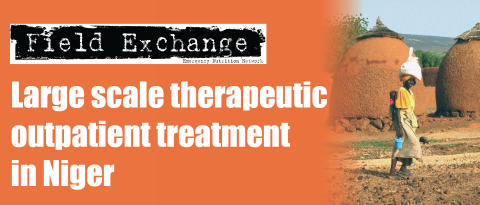New WHO growth standards
This New WHO Growth Standards for infants and children up to 60 months of age, highlighted in Field Exchange 27, are now available. The standards were developed using data collected in the Multi Centre Growth Reference (MGRS) study. They describe normal child growth from birth to 5 years under optimal environmental conditions and can be applied to all children everywhere, regardless of ethnicity, socio-economic status and type of feeding.
The new standards differ from any existing growth charts in a number of ways:
- The new standards are prescriptive and describe how children should grow. This differs to the descriptive references that have only been available until now.
- Breastfeeding is the biological norm and the breastfed infant is established as the normative growth model. The previous growth reference was based on the growth of artificially fed children.
- The pooled sample from the six participating countries has allowed the development of a truly international standard (in contrast to the previous international reference that was based on children from a single country). Child populations grow similarly across the world's major regions when their needs for health and care are met.
- These standards include new growth indicators beyond height and weight, such as skinfold thickness.
- The study's longitudinal nature allows the development of growth velocity standards. This should enable the early identification of children in the process of becoming under or over nourished, rather than waiting for children to cross a growth threshold.
- Six key motor development milestones are included that provide a link between physical growth and motor development.
The WHO continues to recommend the use of the NCHS/WHO international growth reference for children older than 5 years. The new standards do not affect anthropometric measures, indicators, cut-offs, etc, for adolescents, adults, pregnant adults, and the elderly.
The new growth standards will have implications for emergency nutrition programming, especially for screening, prevalence estimation and monitoring/evaluation.A paper by WHO comparing growth patterns and estimates of malnutrition based on the WHO Child Growth Standards and the NCHS/WHO reference is currently in press1. This analysis highlights important differences between the WHO standards and the NCHS reference that vary by age group, growth indicator, specific percentile or z-score curve, and the nutritional status of index populations. Particularly relevant for emergency contexts, the analysis identifies increased prevalence of wasting and severe wasting using the new growth standards, in infancy (2.5 - 3.5 times the estimates based on the NCHS references) and also throughout childhood (1.5 to 2 times the NCHS based estimate). The operational implications for emergency nutrition programming are not explored in this paper but are highlighted in a detailed letter submitted to Field Exchange (see this page).
The standards and associated software are available on the WHO website www.who.int/childgrowth. Training and sensitisation will be taking place in various parts of the world during this year.
For further information, contact: Dr Mercedes de Onis, World Health Organization, Department of Nutrition, 1211 Geneva 27 Switzerland. Telephone: 41-22-791 3320. Fax: 41-22-791 4156. E-mail: deonism@who.int
1de Onis M, Onyango A, Borghi E, Garza C, and Yang H. Comparison of the WHO Child Growth Standards and the NCHS growth reference: implications for child health programmes. Public Health Nutrition, 2006 (in press).
Imported from FEX website


